Mary Anne Yarde's Blog: The Coffee Pot Book Club , page 189
December 23, 2017
Christmas in the time of King Arthur... #history #legend #Christmas

 Christmas in the time of King Arthur
Christmas in the time of King ArthurBy Mary Anne Yarde
Like a sparrow flying through a Mead Hall…
"...O King...you sit a supper in winter, with your commanders and ministers, with a good fire in the midst, while the storms of rain and snow rage outside..."
The Venerable Bede, Ecclesiastical History of the English
Winter in the Dark Ages was a long, drawn out affair. There was no magic light switch you could flick on to banish the dark. Days were short. Nights were long. The world was in hibernation. Food was scarce, and it was cold. Winter was hard, and death from illness or starvation was a very real threat. It was no wonder that the pagans wanted to celebrate Midwinter and New Years Day.
Interestingly, it wasn't until the 4th Century when Church leaders in Rome embraced this pagan holiday and made it their own. And over the centuries this pagan celebration has been 'added' to, until we have the Christmas that we know and love today.
What was Christmas like in Arthurian Britain?
I need to make one thing clear before I begin — many of the stories that we know of Arthur and his Knights are just that, stories. There is nothing substantial to them. So a Christmas at Camelot would have been highly unlikely. The 12th Century French Poets certainly gave Arthur a castle for himself and his Knights, but Camelot itself didn't come about until the 15th Century when Thomas Malory invented it in his great work, Le Morte d'Arthur. Which kinds of puts a whole dampener on “Christmas in Camelot!”
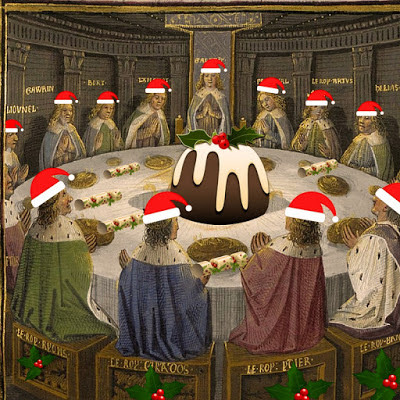
Obviously, our Dark Age ancestors celebrated Midwinter and New Year, but when we are dealing with Arthur, we have to contend with a fictitious Christmas as well.
Sir Gawain And The Green Knight.
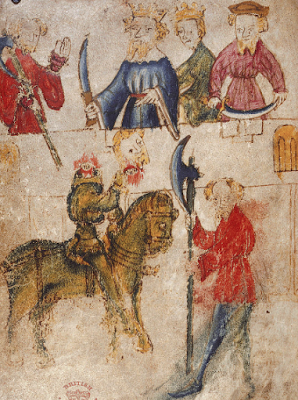 Sir Gawain and the Green Knight (from original manuscript, artist unknown) ~ Wikipedia
Sir Gawain and the Green Knight (from original manuscript, artist unknown) ~ WikipediaIn the 14th Century a poet, whose name has been lost over time, wrote an epic poem called Sir Gawain and the Green Knight. The Pearl Poet, as he became known, described Christmas at Camelot and, as with many things when we talk of Arthur, we can assume he used a great deal of poetic licence!
“…then they brought the first course, with the blast of trumpets and the waving of banners, with the sound of drums and pipes, so that many a heart was uplifted at the melody. Costly and most delicious foods were carried in. Many were the dainties, delicacies and fresh meats, so great was the plenty they might scarce find room on the board and table-cloth to set all the silver dishes. Each helped himself as he liked best, and for each of two guests were twelve dishes served, with a great plenty of beer and bright wine…”
According to The Pearl Poet, Arthur knew how to throw a party! One would expect a feast at the Midwinter/ New Year celebrations, but perhaps not on such a grand scale.
So what kind of food did the Dark Age Kings and Warlords serve up at a Midwinter Feast?

Pottage — which was the staple diet for most, but at a feast it would have been the best pottage you ever tasted. The Rolls-Royse of Pottage!
Roasted Goose and Partridge may have been on the menu.Salmon.Dry cured hams.A boars head.Venison.Cheese.Eggs — preserved ones, because chickens tend to stop laying during the winter months. It is only how chickens are farmed nowadays that ensures we have fresh eggs throughout the year.Pastries
The only fresh vegetables would have been seasonal, but back in the Dark Ages and the Middle Ages for that matter, it was not recommended to eat raw fruit and veg, for fear of dysentery – one of the biggest killers of the time.
Of course, they would also have had ale, mead, wine and beer to wash it all down with! There may well have been one or two rosy faces by the end of the feast!
There would have been music, and entertainment. Maybe not quite on the scale of the Beheading Game that The Pearl Poet introduced us to in Sir Gawain and the Green Knight, but I should imagine there were jugglers and those with what we would call Circus Skills! Bards would tell wonderful stories to entertain the guests — perhaps they told stories of Arthur and his Knights — and as the evening wore on, old men would become philosophical, as they contemplated mortality.

It would have been a wonderful celebration that probably took many months in the planning. These Midwinter celebrations were so important. It was something to look forward too. And after Christmas and the New Year celebrations, spring was once again in sight and with so, the promise of life!
Travel back in time to the land of King Arthur...
The Du Lac Chronicles
War is coming…
The Du Lac Princess (Book 3 Of The Du Lac Chronicles)
The ink has dried on Amandine’s death warrant. Her crime? She is a du Lac.
All that stands in the way of a grisly death on a pyre is the King of Brittany. However, King Philippe is a fickle friend, and if her death is profitable to him, then she has no doubt that he would light the pyre himself.
Alan, the only man Amandine trusts, has a secret and must make an impossible choice, which could have far-reaching consequences — not only for Amandine, but for the whole of Briton.

Amazon US Amazon UK Amazon CA
Read the series for FREE this Christmas with

 Mary Anne Yarde is an award winning author of the International Best Selling Series — The Du Lac Chronicles. Set a generation after the fall of King Arthur, The Du Lac Chronicles takes you on a journey through Dark Age Briton and Brittany, where you will meet new friends and terrifying foes. Based on legends and historical fact, The Du Lac Chronicles is a series not to be missed.
Mary Anne Yarde is an award winning author of the International Best Selling Series — The Du Lac Chronicles. Set a generation after the fall of King Arthur, The Du Lac Chronicles takes you on a journey through Dark Age Briton and Brittany, where you will meet new friends and terrifying foes. Based on legends and historical fact, The Du Lac Chronicles is a series not to be missed.Born in Bath, England, Mary Anne Yarde grew up in the southwest of England, surrounded and influenced by centuries of history and mythology. Glastonbury--the fabled Isle of Avalon--was a mere fifteen-minute drive from her home, and tales of King Arthur and his knights were part of her childhood.
Published on December 23, 2017 23:00
December 22, 2017
A Regency Christmas and some Mistletoe. #Christmas #Regency #Romance @wackyjackyful


A Regency Christmas
By Jackie Williams
Mistletoe

Gathered since the time of druids as a symbol of peace, hope, and harmony, mistletoe became a fun Christmas pastime in more recent times. Although my new Regency romance has preceded the plant’s popularity by some years, it seemed too delightful an opportunity to miss, and so Charlotte, my impetuous heroine of A Gallant Gamble has out-done all her rivals and placed a ball of the lucky charm especially to enable her unmarried friend Elisa to catch every available kiss.
Including one from the deliciously handsome but ostracized, Lord Jeremy Rookwood.
A short excerpt fromInnocent Indiscretions(Unrivalled Regency book 7)
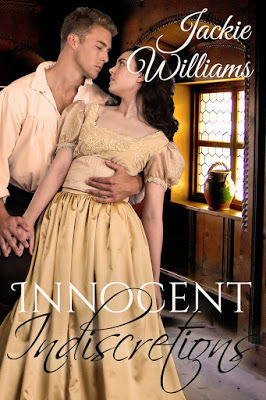 Elisa straightened her shoulders as she and Charlotte walked down the wide staircase and into the ballroom. She couldn’t think of rejection at a time like this, her friends had been too generous. They had cared for her unconditionally. She had no right to be upset. And she wasn’t.
Elisa straightened her shoulders as she and Charlotte walked down the wide staircase and into the ballroom. She couldn’t think of rejection at a time like this, her friends had been too generous. They had cared for her unconditionally. She had no right to be upset. And she wasn’t. She caught sight of her reflection in the mirror over the fireplace. The diamonds about her throat glittered in the light of a hundred candles. So extravagant, so uncalled for, and yet impossible to reject.
Another diamond, altogether different, glistened on her eyelash, but she instantly blinked it away. This was her first ball, her coming out. Nothing would spoil this wonderful day. She would not cry, even if her tear was one of happiness.
She would be twenty-one in less than a week. She was cared for, looked after, even loved. For she refused to doubt that those who had taken her in loved her. They must. No one could be this kind, could give so generously without feeling something.
Yes, she had been reckless, stupid even, but had she deserved to be sold, cast out of her family home and onto the charity of others? No! She refused to believe that the impulsive actions of a sixteen year old could be seen as so deliberately wanton. She had been innocent, naive, excited, and perhaps a little reckless, but none of those things warranted her banishment.
“Champagne, my Lady.” A footman bowed his head as he held out the tray.
She smiled and took a glass, bringing it to her lips as she surveyed the ballroom. It had been transformed throughout the day and now scents of spiced oranges and rosemary boughs blended with an array of festive colour. Candles decorated with ribbons and bows adorned the fireplace. The champagne bubbles tickled her nose.
“Thank you, Mr. Forbes.”
The footman returned her smile as he spoke again.
“And might I add birthday felicitations.”
She sipped again.
“A little too soon, but I thank you all the same.” It was her coming out and her twenty first was only five days away. The ball was to celebrate both occasions.
The rustle of silks at the door drew their attention as Charlotte appeared carrying a ball of mistletoe.
“Forbes! Excellent. Just the person I need to see. Would you mind?” She pointed up to the doorway as she held out a pin.
Forbes placed his tray on the credenza.
“Of course, my Lady.” He looked sceptically up at the doorway. “I hate to pour cold water on your idea, but I think even I am going to need a stool.” He reached up speculatively, his not inconsiderable height reaching to within inches of his goal.
Elisa’s eyes widened as she recalled Charlotte telling her of the new Christmas tradition. Kissing beneath the Mistletoe.
“But you cannot put it there. I am to greet my guests just by the entrance. I cannot possibly kiss all who enter.” Her cheeks flamed as she spoke. She had never been kissed by anyone let alone knew how to kiss back. Charlotte laughed.
“But you could kiss those who deserve one most. Like Lord Jeremy Rookwood.” She ignored Elisa’s sudden gasp of breath. “It will be his first public outing after the death of his father I believe. I suspect he will be as nervous as you and could do with a little encouragement.”
“Charlotte!” Elisa’s cry was as heated as her cheeks. “I am not going to kiss Lord Rookwood. Or any other man. It would be too unseemly.” Her lips trembled at the thought as Forbes stretched up onto his toes and managed to pin the berried ball to the doorframe, but she had no time for further protests as several things happened at once.
Music struck up as a crowd hurried in through the door at the other end of the ballroom. Alexander, Duke of Ormond and his wife, Lily, resplendent in understated elegance led the parade. Giles Denvers and his wife, Lady Anne, followed, and other close friends gathered behind.
A gust of wind made the hundreds of candles flicker as another footman threw the front door of the house open and the first guests began to be announced. Charlotte grabbed Elisa’s hand and pulled her into her place just as Sir Geoffrey, Charlotte’s husband appeared at their side. The next few minutes were a whirlwind of names and charming faces, silk dresses and jewels. Elisa wasn’t sure that she would remember half of the guests, let alone all.
Her smile never left her face as well wishers either kissed her hand or her cheek. She bobbed so many curtsey’s in return for salutations, she wasn’t sure that her knees would be strong enough to stand dancing, but the line eventually trailed away as the last guests arrived and she turned back into the ballroom.
She couldn’t help glancing up as she walked through the doorway, surprised to see the mistletoe ball almost denuded of berries, but Forbes’ grin told her of his ruse. Between many giggles and much laughter, he had handed out sprigs for the guests to kiss beneath.
“There is but one berry left, Miss, but Lord Jeremy Rookwood is yet to arrive.”
The blush which had left her cheeks returned rapidly.
“Perhaps he is not going to come, though you need not keep the berry on my behalf. Perhaps you would like to keep it for your own enjoyment with Mrs. Forbes.” She laughed as the smile left Forbes’ lips and his hollow cheeks paled.
“No indeed, my Lady!” His eyes widened in apparent horror. “Ah! There is the door once again! The last berry will not be wasted after all.” He spun round in relief as the bell clanged, but stopped dead at the under footman’s words.
‘Lord Rowallan, and Lord Albert Trevallian.’
Geoffrey Talbot’s steady hand at Elisa’s elbow stopped her dropping to the floor as her long estranged father and his aging, bewhiskered friend were announced.
Lord Rowallan gave an infinitesimal bow of his head.
“Sir Geoffrey. I am afraid that your invitation arrived too late for a response. My wife is unable to attend, but I hope you don’t mind me introducing a distinguished friend.” The man ignored his own daughter completely.
Geoffrey’s brows creased as Lord Trevallian stepped forwards. He hadn’t met the man before, but he had heard the rumours. Three marriages. Three young brides. Three tragic deaths. He stared for a long moment, assessing the man. Tall, but not particularly heavy set. Old, definitely, but clearly fit. A hard blue stare, his eyelids never blinking. The hairs at Geoffrey’s nape stood on end, but his innate good manners came to the fore and he returned the slight bow.
“I don’t believe we have had the honour, Lord Trevallian.” He acknowledged the older man.
Lord Trevallian’s icy eyes travelled over Elisa, lingering on her décolletage for far longer than was polite. He glanced back at Geoffrey when the ensuing silence became uncomfortable.
“No indeed, Sir Geoffrey, but I am here to remedy that omission on this happy occasion.” He leaned forward and grabbed Elisa’s gloved hand. His thin lips brushed the lace and Elisa recoiled as a waft of foul breath touched her wrist. She trembled at Geoffrey’s side. Geoffrey’s frown deepened.
“Yes, a joint coming out, Christmas, and twenty first birthday are an excellent excuse for a small party.”
Lord Rowallan lifted his chin.
“And an engagement too. My friend is here to announce his betrothal.”Geoffrey bowed once again.
“My felicitations, Lord Trevallian. Might I ask who your bride might be, and if she will be joining our party too?”
Lord Trevallian’s high pitched snigger set his cigar stained whiskers quivering.
“But you jest, Sir. Of course she will be joining us. She is already here.”Geoffrey glanced towards the gathered guests who looked on from the ballroom with some interest.
“I am all agog. Who can you possibly mean?”
His Lordship raised his bushy eyebrows and waggled them dramatically as he stared at Elisa.
“Why, Miss Rowallan, of course! We have been betrothed for some time but her father thought this the perfect opportunity to make our engagement public.”
Geoffrey let out a great bellow of laughter as he glanced at Elisa.
“Ah, my Lord, your jest is a good one, but you must be three times her age. This is Christmas, not April Fools. Come, let me introduce you to the rest of Elisa’s guests and perhaps you can find a more suitable prospect there.” He attempted to turn the elderly man towards the ballroom, but Lord Rowallan intervened.
“I see that my daughter has not told you of her situation. I don’t know why I should be surprised. Elisa has always thought she knows best.” He narrowed his eyes at Elisa and smoothed his hair as a gust of air ruffled it. “She has been betrothed to Lord Trevallian since her fifteenth birthday. They will be married in five days time on the eve of her twenty-first.”Elisa stepped back, her hand pressed against her throat in horror.
“No, father! You cannot mean to marry me off to him. I absolutely refuse.”
Lord Rowallan looked down his long nose.
“I see you have not learned to control yourself during your years of exile, but regardless of your lack of propriety, you cannot refuse. You have not yet reached your majority. Until your birthday on Christmas day, you will bow to my will.”
Lord Trevallian smiled and showed a row of crooked, yellow teeth. He tapped a bony finger on Geoffrey’s arm.
“Sir Geoffrey, Miss Rowallan has known of this arrangement for a long time. It can be of no surprise to her and I wonder that she has never mentioned my interest to you, but I have waited as long as I can. We must be married this Christmas eve.”
Furious at Lord Rowallan’s presumption after five years of ignoring his only daughter, Geoffrey shook the reptile’s clasping hand from his jacket and was about to show both men the door, when a movement caught his eye.
It seemed that another late guest had been allowed in. The newcomer approached the startled group, sliding his coat from his shoulders and handing it to Forbes. Forbes raised an eyebrow at the man, glanced quickly at his master’s sudden smile, and shoved his foot against the ballroom door as he handed the new guest something back.
Tawny haired and long limbed, Lord Jeremy Rookwood strode across the hallway and stood in front of Elisa. He bowed over her hand and then held up a small sprig of leaves attached to a lone white berry.
“Jeremy?” He had come!“It must be five years.” She wasn’t sure that her eyes deceived her.
Jeremy smiled gently and reached out to touch her cheek.
“Five years too long, Elisa.” He growled before dipping his head and covering the astonished woman’s mouth with his own.
Jackie Williams
 I was born in Essex England during the mid sixties but I missed all the fun. Being only young, I assumed that all Beatles were six legged creatures and Flower Power was something to do with the vigorous way my mother kneaded the bread dough.
I was born in Essex England during the mid sixties but I missed all the fun. Being only young, I assumed that all Beatles were six legged creatures and Flower Power was something to do with the vigorous way my mother kneaded the bread dough.My wonderful parents brought me up with a huge love of books. We read anything and everything. Bedtime stories were a treasured time of adventure and mystery. My sister and I sat wide eyed in wonder and to this day I worry about Dinah and Dorinda being pricked with pins because they grew so fat, and I never pull faces at the a waning moon (or was it a waxing one?) just in case my chops stay that way . (The Wind On The Moon)
I began reading romance while still at school. The fuel for many a teenage fantasy leapt from between the covers of wildly romantic books and my passion still lingers now for all those dark haired heroes.
My own beautiful teenage daughter persuaded me to write my first romance. She was only fourteen at the time and between books for children and adults. She couldn't find anything that ticked all her numerous and particular boxes and so she asked me to write a book, with all the exact ingredients just for her. Though not just a book for teens, she enjoyed the resulting tale so much that she shared it with her friends and I eventually published A Perfect Summer as an ebook on amazon.
But I have discovered that writing is not easily stopped once you start. It has turned into a grand passion that I just cannot hold back. The fingertips start tapping the keys and ideas suddenly come flooding, far too many for just one book and so I began another and then another, and I am still nowhere near done.
I hope you enjoy all of my efforts and I look forward to your comments and reviews.
If you are interested in finding out more, you can see what I get up to at:
Romance Suspense Books
Don’t forget to sign up to my newsletter for all my latest goings on:
Newsletter
You can find me on Wordpress, Twitter, Facebook, Google+, Pinterest, and Instagram.And you can always Email me at:Jackie@romanticsuspensebooks.co.uk

Catch up with the Unrivalled Regency series on Amazon

Published on December 22, 2017 23:00
December 21, 2017
A Midwinter’s Feast in the mystical world of 13th century Scotland #Christmas #Scotland @m_morganauthor


A Midwinter’s Feast in the mystical world of 13thcentury Scotland.
By Mary Morgan

Come journey with me as I whisk you away to 13th century Scotland for a Midwinter’s feast. We shall arrive at Urquhart Castle on the banks of Loch Ness. This is the home of the Clan MacKay—the Dragon Knights. Their bloodline is steeped in ancient Celtic mythology. Though they respect the new religion that has swept across their land, the Dragon Knights continue to honor the old ways. Midwinter is a celebration of light and warmth here within the walls. The doors have been left open for all to enter in peace. Once you step inside, you are drawn to the holly boughs with ivy, bay, crimson-berried yew and fragrant bunches of rosemary.
The torches cast a welcoming light as you proceed onward. As we enter the Great Hall, you are met with boisterous laughter and gaiety. A bard is recanting the tale between the aging Holly King (representing the darkness of the old year), and the young Oak King (symbolizing the light of the new year). Some of the older lasses have chosen to weave a sprig of holly onto their gowns and they nod at you in passing.
Candles illuminate the hall in a soft glow as you make your way toward the feasting tables. The Dragon Knights and their wives are seated at a longer table near the hearth. Ale and mead are flowing, along with the tempting dishes you survey as you take your place. You are tempted by the trencher of wild boar stuffed with onions and cabbages to your right. Or maybe you would prefer the spiced apples and damson tarts.
The minstrels begin to play a lively tune and a few of the couples grasped hands to join in the merriment…
Onward they danced, twirling and swaying around the hall. Laughter filled Ailsa, along with Desmond’s touch. As the minstrels ended their song, she dipped a curtsy to all.
Fiona handed her a cup of ale. “You were wonderful out there. I’ve never witnessed my brother dancing. He’s good.”
“Thank ye.” Ailsa drained the cup, relishing the cool liquid.
Desmond returned holding two plum tarts in his hand. “By the Gods, these are delicious. Who made them?”
Fiona tried to snatch one from his hand. “Brigid. They’re a favorite of Duncan’s.”
He shook his finger at her. “Nae. I brought one for Ailsa.”
Fisting her hands on her hips, Fiona pouted. “But none for your beloved sister?”
“Ye wound me.” Handing her one, he added, “Ailsa and I will just have to share this one.”
Pleased with his gesture, Fiona kissed him on the cheek. Taking the offering, she was about to take a bite, when Alastair approached from behind her.
“’Tis good to see ye are eating.” He placed his hands around her waist.
She laughed when he nibbled on her neck.
“Come, Desmond. Let us eat our fare away from the lovers,” Ailsa suggested and tugged on his arm.
Snorting, he complied and followed her out of the hall and near the entrance. When he held the treat out to her, Ailsa took a bite.
Closing her eyes, she savored the sweet fruit and crust. “Mmm…”
“’Tis good.” He whispered softly.
Desmond’s tongue teased the edges of her mouth, and snapping her eyes open, Ailsa yearned to have him kiss her.
Mary Morgan
 Award-winning Scottish paranormal romance author, Mary Morgan, resides in Northern California, with her own knight in shining armor. However, during her travels to Scotland, England, and Ireland, she left a part of her soul in one of these countries and vows to return.
Award-winning Scottish paranormal romance author, Mary Morgan, resides in Northern California, with her own knight in shining armor. However, during her travels to Scotland, England, and Ireland, she left a part of her soul in one of these countries and vows to return. Mary's passion for books started at an early age along with an overactive imagination. She spent far too much time daydreaming and was told quite often to remove her head from the clouds. It wasn't until the closure of Borders Books where Mary worked that she found her true calling--writing romance. Now, the worlds she created in her mind are coming to life within her stories.
If you enjoy history, tortured heroes, and a wee bit of magic, then time-travel within the pages of her books.
Mary loves to hear from readers, you can find her… Website Blog Twitter Facebook Goodreads Amazon Author Page Pinterest Instagram BookBub
ORDER OF THE DRAGON KNIGHTS
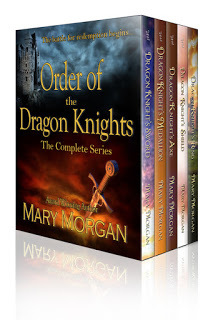 Dare to journey with the Dragon Knights of Scotland!
Dare to journey with the Dragon Knights of Scotland! They were an ancient order descended from the great Tuatha De Danann, a tribe from the Goddess Danu. Half human and half fae, each blessed with mystical powers. They were also given holy relics and guardianship over the dragons.
With the dawn of Christianity, the dragons were systematically hunted down and slain leaving only one. The Dragon Knights took her from Ireland to a land across the sea, settling in the Great Glen near Urquhart. The clan was known as the MacKay clan, descendants from the MacAoidh.
Yet, there were those who deemed the Order had too much power, and they tried to possess it for themselves. They were evil and twisted, and their plan succeeded one fateful night. A battle was fought and their sister was killed.
The Clan MacKay is no longer.
The Dragon Knights scattered across the land.
Yet out of the darkness, they will each fight for redemption.
Amazon
A Highland Moon Enchantment
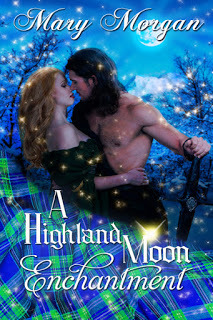 You first meet this warrior in Dragon Knight’s Axe, Order of the Dragon Knights, Book 3
You first meet this warrior in Dragon Knight’s Axe, Order of the Dragon Knights, Book 3
Irish warrior, Desmond O’Quinlan has never surrendered his heart to any woman. He has no wish to have his soul tortured by love. Yet, the moment he locks gazes with Ailsa, his fate is destined for an adventure he never fathomed. He may have battled alongside a Dragon Knight, but his greatest challenge will come from within his own heart.
Ailsa MacDuff, a warrior among her clan, has no desire to have a man chain her to a life of obedience. However, that is before she meets Desmond. The temptation to allow this warrior inside her heart is a risk she dares to take, but one that could lead to a future of emptiness and sorrow.
When betrayal looms from within, the battleground of love is no match for these two warriors. Can the power of a Highland full moon be strong enough to unite or destroy them?
Amazon

Published on December 21, 2017 23:00
December 20, 2017
Christmas in the time of the Vikings… #Christmas #history #Vikings @sarahdahl13

 Christmas in the time of the VikingsBy Sarah Dahl
Christmas in the time of the VikingsBy Sarah DahlYule

When looking at the Viking pagan religion, we have to go back at least 1000 years, which makes it dificult to exactly verify most conclusions today’s researchers reach. What is clear about the Christian and pagan religion, the Germanic and the Anglo-Saxon as well as the Norse traditions is: they had very similar, if not the same, roots and stem from times we have very little sources about. Some claim that a common root turned into several different customs, and what we today (in the western, Christian countries) celebrate is remnants stemming from the early medieval and even earlier times. After all, Santa Claus is just the Allfather Odin disguised with a silly red hat (Odin meaning “Jólnir”, “the Yule One”), and New Year’s Resolutions are just a diminished form of the Yule Oath a Viking would have sworn on his horn of ale. We are talking about the ancient Scandinavian festivities that are called Jól in Iceland; Jul in Norway, Sweden, and Denmark; and Yule in some English-speaking societies.
A Christian King merges the dates
Let me start by sorting what we do know, but which also is down to interpretation of sources (and other researchers have drawn different conclusions). There’s consensus that the pagan Yule celebrations were moved to the time of the Christian Christmas celebrations by the Norwegian King Hákon the Good. It was his first step of gently introducing Christian traditions and blending them with the old pagan rituals (instead of forcing Christianity onto the Vikings, which they’d sure have resisted). So since the early 10th century, the Jólablót is held on December 25, and he made it a law that “everyone was to have ale for the celebration with a measure of grain, or else pay fines, and had to keep the holiday while the ale lasted” (Wouldn’t we like laws of this kind these days, too?)
This holiday began at winter solstice and lasted until Jólablót, the Yule sacrifices, around the 12th of January, so three weeks. In the last three days up to the sacrifices there was drinking, feasting, games and song, topped off by the sacrifices to the gods and other powers of winter. But lets start with the roots of the festivities.
The power of the sun
Winter solstice was the shortest day and marked the darkest and most dangerous point of the year: would the sun return, and would it – and with it the world – once again be reborn? It was a fearful wait in almost total darkness, day and night. What if the sun would not succeed and rebirth itself? During these three weeks, the Vikings must have anxiously waited for proof that the days indeed did become longer and brighter again – their lives depended on it. A new cycle of life only started if the sun was victorious and rebirthed itself from the dark belly of the wolf (death) that had swallowed her. So the Yule weeks were not at all mindless drinking and frolicking; they were a fragile, strict time with many rituals that had to be followed to enable the return of the sun, and therefore: of life.Because imagine winter from a Viking perspective: it was a fierce time of death and cold, when darkness ruled and the boundaries between the world of the living and the dead blurred. It was the time when the souls of the dead and other creatures like elves and trolls roamed the world of the living, with unclear intentions. It was of vital importance to give offerings by gifting food and drink, to placate the powers that were potentially threatening and dangerous, so that they’d rather be helpful and kind.
The mighty Thor and his goats
And who was the most potent of the gods to protect people from the roaming forces on earth during these fragile times? Thor, of course, the god of thunder with his mighty hammer. He ensured safe growth, protection and return of the sun. He was worshipped in ways we can only deduct from saga snippets and traditions. His symbol was the goat, which became an established symbol for Yule. The Yule-Goat was slaughtered as a sacrifice during Yule, because: Thor himself had magical goats, and he could slaughter them if food was needed, and simply revive them the next day with a blow of his hammer. It was the resurrection of that which nourishes – just like the sun everyone was waiting for. Maybe then, like it was a custom not so long ago, goat-masked men roamed the neighbourhoods, singing and dancing, receiving people’s offerings to the mighty Thor?Although, these Vikings’ Chrismas carols must have been very different to what we are used to, and surely they were much … let’s say straighforward. But they carried the same essence: rejuvenation, nourishment, renewed strength for a new world, a new year, a new cycle.
And talking of nourishment and birth: Yule was different to Christmas in that it also was the time when the female powers (dísir) were celebrated.
The Night of the Mothers
During Yule, the ancestral mothers and other female powers of different realms were worshipped. For one, females were life-giving just like the sun, associated with birth and midwifery in times when everyone just waited for the imminent birth of the sun, of light, and new life.
And in a practical sense, the feasting was only possible through countless women providing food and drink they had made. They literally stood for abundance and provision-giving. Even the Anglo-Saxon heathens celebrated The Night of the Mothers at New Year in the 7thcentury, which corresponds with Yule and the continental Germanic Mother Cult. I blame Christianity for diminishing the female role (of the Sun goddess, Sól, the Mothers, and goddesses), and turning the once central importance of women, living and dead, into a mere sidenote.
Some sources claim that it was on the first night, Mothers’ Night, that the goddess Frigga and the dísir (female ancestral spirits) were honoured. Only they could ensure the rebirth of the world from the darkness of winter.

Bloody sacrifices and holy oaths
So with offerings and gatherings the days of Yule slowly moved towards the hopefully successful rebirth of the sun to its former glory around the 12th of January. A great three-day banquet and the big Yule sacrifices would be prepared, for when around mid-January the new year began.
When then the time came to make the big sacrifices, some sources tell of gruesome events around the heathen temples: farmers from near and far came with food in abundance. All took part in the drinking of ale, animals were killed, and their blood collected to sprinkle with it the pedestals, walls, and men in the temple. The meat was cooked and served at the huge banquet. Surely a sacrificial beaker was carried around the fires. The host, a chieftain, would bless the meat and toasts would be made. In King Hákon’s time those were: 1. to Odin for victory and power, 2. to the gods Njördr and Freyr for good harvests and peace, 3. to the King, and lastly to the dead kinsfolk. These were all especially serious and meaningful oaths, sworn to the cup or horn while drinking and feasting at the Yule banquet with all the friends, family, and wider community from near and far.
And now do you suddenly see where our New Year’s Resolutions come from?It wasn’t just “Santa Odin” we are still using in our traditions today. ;-) Our Resolutions are also just a diminished form of the bloody Viking Yule Oath – and we should maybe take them bloody serious again! ;-)

So raise your horns: Skål to Odin, the sun, and our ancestors! Happy Yule and Merry Christmas!
Sources: freya.theladyofthelabyrinth.com (excellent source for all things Viking!)Valkyria.com (a beautiful Norse lady’s blog about living the Viking life and mythology)Theasatrucommunity.orgwikipedia: Yule (all accessed on 4thDec. 2017)
Sarah Dahl
 Sarah Dahl lives on the edge of the rural German Eifel and writes historical fiction primarily set in the Viking age. She also works as an editor, translates, and coaches new writers in German and English. She is interested in everyday life in bygone centuries and the human stories that may have occurred behind the hard, historical facts.
Sarah Dahl lives on the edge of the rural German Eifel and writes historical fiction primarily set in the Viking age. She also works as an editor, translates, and coaches new writers in German and English. She is interested in everyday life in bygone centuries and the human stories that may have occurred behind the hard, historical facts. You can connect with Sarah…Author homepage and blog Book Alert Mailing List Facebook Twitter Goodreads
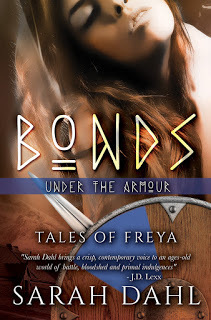 The "Tales of Freya" is a collection of sensual short stories set in the Viking age – and the fourth Tale is "Bonds – Under the Armour"
The "Tales of Freya" is a collection of sensual short stories set in the Viking age – and the fourth Tale is "Bonds – Under the Armour"
In a world of crackling fires and rough landscapes, long winters and bloody raids, the immediacy of life and death ignites undeniable passion. Warriors and monks, healers and housewives -- all follow the call of their hearts and bodies to indulge in pleasure that may forever change their lives.
Amazon US Amazon UK

Published on December 20, 2017 23:00
December 19, 2017
Christmas in the time of The Puritans ~ #Christmas #history #CivilWar @CryssaBazos

 Christmas in the time of The Puritans.
Christmas in the time of The Puritans.By Cryssa Bazos.
The Puritans who Abolished Christmas

Christmas has had a long tradition of being under siege. There’s Ebenezer Scrooge with his humbug attitude toward Christmas cheer, and the Grinch who tried to steal it. Yet these literary examples pale in comparison to the English Parliament’s attempt to abolish Christmas during the English Civil War. The blame often falls to Oliver Cromwell, who is cast as both Scrooge and the Grinch for cancelling Christmas, but the campaign to eradicate Christmas started years before he rose to power.
Historical Background
From 1642 to 1651, England was gripped by three episodes of civil war. Parliament opposed the absolute rule of King Charles I, and, for the most part, sought Parliamentary reform. While the moderates who opposed the king were focused on curtailing the king’s power, more extreme dissidents stepped into the ring to demand religious reforms. These Independents (or Puritans) were seeking to reform the Church of England. Their view was that the Reformation did not go far enough to break from the idolatry of the Roman Catholic Church. During this time, they stripped the churches of their altar rails, stained glass, and icons, all in an effort to create a more godly society, cast in a strict Puritan mode.
But why pick on Christmas?
Since Christmas celebrates the birth of Christ and the Puritans were focused on church reform, you’d think that they would want to celebrate Christmas, not abolish it. The reason lay in its observation. Christmas was a time of revelry overlaid on pagan traditions. Today many complain about the commerciality of Christmas, but then the complaint from some quarters focused on the decadence and frivolity of the season. The twelve days of Christmas lasted from Christmas Eve through to Twelfth Night, the evening before Epiphany. Twelfth Night was particularly a raucous affair, presided by the Lord of Misrule.
If you stepped into the 17th century for Christmas, you would have seen many of the churches and halls decorated with greenery that consisted of rosemary, bay, holly, ivy, and mistletoe. The great Yule log was laid to burn in the fireplace, while mince pies, plum pudding, cakes, and roasted meats would be laid out for feasting. Women would go wassailing door to door on New Years Eve singing songs of the season in exchange for coin, food or drink. The common folk would gather for revels preformed by mummers, while the court favoured extravagant masques with singing, dancing and plays. Professional actors and courtiers would don elaborate costumes with elaborate stage sets to perform before the King and Queen.
Mischief and mayhem was certainly the order of the day and things often got out of hand.
 "Christmas - The Wassail Bowl" ~ Hollis, Thomas (1818–1843)
"Christmas - The Wassail Bowl" ~ Hollis, Thomas (1818–1843)The Christmas bans
The cancellation of Christmas did not happen overnight. In September 1643, a year into the civil war, Parliament signed a treaty with Scotland to provide military support for their fight against King Charles I. One of the conditions imposed by Scotland was that Parliament reform the Church of England. Seriously, a case of preaching to the choir. They needed very little encouragement to tackle that.
The Saint’s days were abolished and in their place, national fast days (not feast, quite the opposite) were instituted. A line was drawn in December 1644 when a national fast day landed on Christmas Day. Parliament posted a public notice confirming the fast day was on and Christmas off. In the future, Christmas was to be a normal working day. Not only that, they rubbed a little salt in the wound:
“And that this day in particular is to be kept with the more solemne humiliation, because it may call to remembrance of our sinnes, and the sinnes of our forefathers, who have turned this Feast, pretending the memory of Christ into an extreame forgetfulnesse of him, by giving liberty to carnall and sensuall delights.” Acts and Ordinances of the Interregnum, 1642 -1660; British History Online.
The people were not amused. Over the next few years, there were scattered riots against shop owners who were open for business on Christmas, and angry mobs showing up to churches demanding a service. Apprentices led a revolt, having had their holiday eliminated and their traditional alms on St. Stephen’s Day (the day after Christmas) cut off. In defiance, greenery was draped over a public water conduit at Cornhill, and the Lord Mayor of London was forced to bring reinforcements to put the riot down.
An example of this happened just after Twelfth Night in 1647. Mathew Clarke, the Minister of Strettam from the Isle of Ely, petitioned Parliament for justice over his rough treatment at the hand of his parishioners. By this time, Parliament had imposed a penalty on ministers and churchwardens who did not comply with Parliament’s ban against Christmas services. Mister Clarke complained that his people brought in a soldier to preach to the congregation (because he wouldn’t risk being fined) in the morning and afternoon. The minister pleaded with them to cease, but they threatened to pull him down from his reading-seat and get the soldier to preach again that evening if he didn’t do it himself.
In every sense, the battle over Christmas divided the country as the war had.
It was really only when King Charles was executed in 1649 that the Christmas controversy had the wind knocked out of it. Parliament now controlled the entire country, and they were determined to usher in the rule of Saints.
What about Ollie?
With the execution of the king, Oliver Cromwell became a leading voice for Parliament. He was appointed Commander in Chief and sent to punish the Scots for supporting the king’s heir, Charles II. After the last battle of the civil war in 1651, everyone looked to Cromwell for leadership. In 1653, he became the Lord Protector and a de facto king. Cromwell had always supported abolishing Christmas and made a point of working on Christmas Day as many other MPs did. Though he was not single-handedly responsible for cancelling Christmas, he did enforce the law when he became Lord Protector, thereafter earning a place in history as a bona fide Grinch.
 Oliver Cromwell
Oliver CromwellFinal good tidings
Fortunately, the ban on Christmas only lasted until the Restoration of the monarchy in 1660. When King Charles II ascended the throne, he ushered in a new era of merriment and restored the holiday. Welcome Christmas, Christmas Day.
Media:
Image of people celebrating Xmas:
By T. Hollis (likely Hollis, Thomas (1818–1843))R.W. Buss (1804 – 1875). "For Mr. Hogarth, of the Haymarket, he painted four small subjects illustrative of Christmas, entitled, Tlu Waits ; Bringing in the Boar's Head ; The Yule Log, and The Wassail Bowl ; all afterwards engraved." [1] [CC BY 4.0 (http://creativecommons.org/licenses/by/4.0)], via Wikimedia Commons
Picture of Oliver Cromwell:By Peter Lely - Amgueddfa Cymru — National Museum Wales, Public Domain, https://commons.wikimedia.org/w/index.php?curid=2984325
Holly image- public domain from Visual Hunt. No attribution required.
Cryssa Bazos
 I am a historical fiction writer and 17th Century enthusiast, with a particular interest in the English Civil War (ECW) and romantic fiction. I blog about English history and storytelling at my site, the 17th Century Enthusiast, and I'm involved with the English Historical Fiction Authors blog site and a member of the Romantic Novelist Association (RNA) and the Historical Novel Society (HNS).
I am a historical fiction writer and 17th Century enthusiast, with a particular interest in the English Civil War (ECW) and romantic fiction. I blog about English history and storytelling at my site, the 17th Century Enthusiast, and I'm involved with the English Historical Fiction Authors blog site and a member of the Romantic Novelist Association (RNA) and the Historical Novel Society (HNS). Cryssa loves to hear from readers, you can find her…
Website Facebook Twitter Instagram
Traitor's Knot
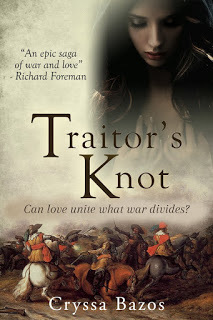 England 1650: Civil War has given way to an uneasy peace in the year since Parliament executed King Charles I.
England 1650: Civil War has given way to an uneasy peace in the year since Parliament executed King Charles I.Royalist officer James Hart refuses to accept the tyranny of the new government, and to raise funds for the restoration of the king’s son, he takes to the road as a highwayman.
Elizabeth Seton has long been shunned for being a traitor’s daughter. In the midst of the new order, she risks her life by sheltering fugitives from Parliament in a garrison town. But her attempts to rebuild her life are threatened, first by her own sense of injustice, then by falling in love with the dashing Hart.
The lovers’ loyalty is tested through war, defeat and separation. James must fight his way back to the woman he loves, while Elizabeth will do anything to save him, even if it means sacrificing herself.
Traitor's Knot is a sweeping tale of love and conflicted loyalties set against the turmoil of the English Civil War.
Amazon

Published on December 19, 2017 23:00
December 18, 2017
The Tudor’s Christmas Lord of Misrule #Christmas #Tudors #history @tonyriches

 The Tudor’s Christmas Lord of MisruleBy Tony Riches
The Tudor’s Christmas Lord of MisruleBy Tony RichesKing Henry VII liked to liven up the Tudor festivities by handing his court over to one of his jesters, as the ‘Lord of Misrule’ for the twelve days of Christmas. As well as organising the Christmas entertainment, including masked balls, plays and feasting, the Lord of Misrule presided over a mock court. In my latest book, HENRY (Book three of the Tudor Trilogy) there is a short description:

Servants carried steaming cups of mulled wine for Henry and Elizabeth, as well as sweet treats for the children, who were brought low chairs and velvet cushions to sit on. A colourful satin curtain pulled back as if by magic, to reveal a candlelit wooden stage, with a canopy of state supported by long wooden poles, painted in spirals of Tudor green and white.
A musician beat his drum and the king’s trumpeters blasted a discordant note as Patch the fool appeared on the stage. Dressed as a knight, with a coat of knitted woollen mail and a cooking pot on his head, he began the entertainments as master of ceremonies, mimicking the arrogant tone of Sir John de Vere, Earl of Oxford, as he read from an over-large scroll.
He drew an enormous wooden sword, which he waved at the children while bellowing a humorous song of his great bravery. In a flash of smoke, another of Henry’s fools appeared. A stocky dwarf dressed as a bright red dragon, he did his best to avoid the oversized sword, roaring and dancing around Patch as Elizabeth’s minstrels played a lively jig. Little Harry clapped his hands in delight as the unconvincing dragon fell over his own tail and tripped from the stage.
Next came another of Henry’s fools, carrying a shepherd’s crook and wearing an absurdly high, gold-painted bishop’s mitre. Disguised as the Bishop of Misrule, he proceeded to wag his finger in the air and lecture the king and his family in a stentorian voice, yet none of his words made any sense.
‘He mocks Bishop Foxe!’ Elizabeth laughed.
‘A poor resemblance,’ Henry grinned, ‘yet his manner is unmistakable.’
A troupe of Flemish jugglers amazed them with their skill, throwing heavy wooden clubs to each other and spinning them high in the air. As the last of the jugglers vaulted from the stage, Patch the fool returned and bowed to Henry and Elizabeth with exaggerated reverence to announce the finale.
The choir of Westminster Cathedral entered, all dressed in white and wearing silver wings of angels. Their caroling echoed through the palace as they sang Henry’s favourite songs, accompanied by musicians with drums and flutes.

The tradition of appointing a Lord of Misrule has its origins in ancient Rome, as for the December feast of Saturnalia a slave was chosen to represent the god Saturn.as the ‘King of Saturnalia’. The roles of master and slave were reversed, so as with the Lord of Misrule, the King of Saturnalia ‘ruled’ over his masters.
Although King Henry VIII followed the tradition of the Lord of Misrule with enthusiasm, his daughter, Mary Tudor did not approve and put an end to it.
Happy Christmas to all our readers!
Tony Riches
 Tony Riches is a full-time writer and lives with his wife in Pembrokeshire, West Wales. After several successful non-fiction books, Tony turned to novel writing and wrote 'Queen Sacrifice', set in 10th century Wales, followed by 'The Shell', a thriller set in present day Kenya. A specialist in the history of the early Tudors, he is best known for his Tudor Trilogy. Tony’s other international best sellers include 'Warwick ~ The Man Behind the Wars of the Roses' and 'The Secret Diary of Eleanor Cobham'.
Tony Riches is a full-time writer and lives with his wife in Pembrokeshire, West Wales. After several successful non-fiction books, Tony turned to novel writing and wrote 'Queen Sacrifice', set in 10th century Wales, followed by 'The Shell', a thriller set in present day Kenya. A specialist in the history of the early Tudors, he is best known for his Tudor Trilogy. Tony’s other international best sellers include 'Warwick ~ The Man Behind the Wars of the Roses' and 'The Secret Diary of Eleanor Cobham'. For information about Tony’s books please visit his website www.tonyriches.comand his popular blog, The Writing Desk at www.tonyriches.co.uk. You can also find him on Facebook at https://www.facebook.com/tonyriches.authorand Twitter @tonyriches.

From Book 1: Based on the true story of a forgotten hero, OWEN is the epic tale of one young man’s incredible courage and resilience as he changes the course of English history.
England 1422: Owen Tudor, a Welsh servant, waits in Windsor Castle to meet his new mistress, the beautiful and lonely Queen Catherine of Valois, widow of the warrior king, Henry V. Her infant son is crowned King of England and France, and while the country simmers on the brink of civil war, Owen becomes her protector.
They fall in love, risking Owen’s life and Queen Catherine’s reputation—but how do they found the dynasty which changes British history – the Tudors?
This is the first historical novel to fully explore the amazing life of Owen Tudor, grandfather of King Henry VII and the great-grandfather of King Henry VIII. Set against a background of the conflict between the Houses of Lancaster and York, which develops into what have become known as the Wars of the Roses, Owen’s story deserves to be told.
Amazon

Published on December 18, 2017 23:00
December 17, 2017
Christmas feast in Ancient Roman ~ #Christmas #history #Food #Roman @CRipleyMiller


Christmas Feast in Ancient Rome.
By Cynthia Ripley Miller.
The Ancient Roman Table
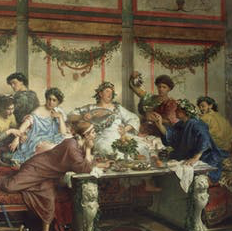
One of the major aspects of Christmas is the holiday table and family favorite cuisine. For many, their traditional foods reach back to past generations connected to their countries of origin, regions, and tastes. In my case, I’m a first generation Italian-American, so my family meals are connected to the foods of Tuscany where my parents were born. My husband’s roots are German-American South Dakota farmers. Our Christmas table can be quite interesting as well as delicious. My novels are set in late ancient Rome and my characters on occasion feast together. Consequently, I set out to find what were some of the most delectable Roman foods and recipes popular for celebrations.
Popular Roman Fruits were: apples, pears, plums and quinces. Later in its history came: apricots, peaches, cherries, and grapes.
Common Garden Vegetables included: artichokes, asparagus, carrots, garlic, beans, chicory, lentils, radishes, peas and cucumbers.
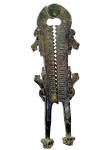 Romans liked nuts: almonds, hazelnuts, filberts, pistachios and walnuts. Even today, these nuts are a part of my family’s dessert course. When I was a child, my grandfather, the holiday cook, usually had two large bowls laden with these nuts placed beside platters of fruits and sweets. We used nutcrackers and silver picks to pry the nutmeats from their shells and the Romans did too. TheLeavenworth Nutcracker Museum in the United States displays a bronze Roman nutcracker dated between 200 B.C. and 200 A.D.
Romans liked nuts: almonds, hazelnuts, filberts, pistachios and walnuts. Even today, these nuts are a part of my family’s dessert course. When I was a child, my grandfather, the holiday cook, usually had two large bowls laden with these nuts placed beside platters of fruits and sweets. We used nutcrackers and silver picks to pry the nutmeats from their shells and the Romans did too. TheLeavenworth Nutcracker Museum in the United States displays a bronze Roman nutcracker dated between 200 B.C. and 200 A.D. Fishes: In the early Roman era, fish was not a common meal, but before the Republic ended, ‘fresh or rare fish brought high prices.’ Often the rich kept fishponds to breed their catch. Mullet (mullus) and a type of turbot (rhombus) were popular. ‘Salted fish was cheap and exported from most Mediterranean harbors. Oysters were a popular delicacy.’
Meats: Romans ate very little beef because ‘it was a mark of luxury and was eaten only on special occasions.’ Cows were sacrificed to the gods and its ‘heart, liver and lungs were given to priests to be burned on the altar.’ Also, it’s size kept it from staying fresh in warmer weather. Pork was the preferred meat. ‘There were fifty different ways of cooking pork as well as six kinds of sausages based on pork.’ Other meats consumed were mutton, veal and goat. Sausage is still a popular dish in Italy today.
Domestic Fowl and Game: chickens, ducks, geese, and pigeons.

Wild Fowl: cranes, grouse, partridge, snipe and woodcock—Peacocks were very expensive.
Cereals: wheat, barley, oats, and rye. Bread:‘The best bread was made from fine wheat flour.’ The Romans also had many varieties of bread made from coarse wheat flour, flour and bran, or bran alone.
Dairy Products used: milk, cream, curds, whey and cheese.
Savory and Sweet—Seasonings comprised: anise, cumin, fennel, mint, mustard, and poppy seeds. Salt was first evaporated from seawater, later it was mined. Pepper came from Asia. Honey was used as a sweetener.
A wonderful book about ancient Roman food and culinary customs is Patrick Faas’s Around the Roman Table. Many of the recipes have come from the ancient Roman chef Appicus. Sauces and marinades were strong elements in ancient Roman cuisine. One of the recipes in the book is Soft-Boiled Eggs in Pine-Nut Sauce. This recipe calls for pepper, honey, garum (an ancient fish sauce) and pine-nuts. Today one can find pine-nuts in pesto and a variety of dishes.
Some other recipes are Fried Veal Escalope with Raisins, Columella Salad, which is a combination of mint, coriander, parsley, leek, thyme, cheese, vinegar and pepper. And for dessert, Nut Tart whose ingredients include almonds, pistachios, and pine-nuts, honey, wine, sheep’s milk and a teaspoon of garumor pepper. When cooked it produces a firm pudding that is chilled and then tipped onto a plate and drizzled with boiled honey.
Additional ancient Roman delights that were quite popular: Lucanian Sausages (My characters love this dish!), Libum (Sweet Cheesecake), and Mulsum (Honeyed Wine).
It’s possible to visit ancient Rome for the holidays and bask in its cuisine. Why not bring the recipes preserved by Appicus and others into your holiday kitchens? I’m off to the market for pine-nuts and sausages! Buon Appetito.
Books on ancient Roman Cooking: Around the Roman Table, Patrick Fass; A Taste of Ancient Rome, Ilaria Gozzini Giacosa; The Classical Cookbook, Andrew Dalby and Sally Grainger
Sources: Around the Roman Table, Food and Feasting in Ancient Rome by Patrick Faas; Nova: Ancient Roman Recipes.com
Cynthia Ripley Miller
 Cynthia Ripley Miller is an Italian-American writer who loves history, languages and books. As a girl, she wondered what it would be like to journey through time. Today, she writes to bring the past to life. Cynthia has two degrees, has taught history and teaches English. Her short fiction has appeared in the anthology Summer Tapestry, at Orchard Press Mysteries.com and The Scriptor. A Chanticleer International Chatelaine Award finalist for her novel, On the Edge of Sunrise, she has reviewed for UNRV Roman History, and blogs at Historical Happenings and Oddities: A Distant Focus and on her website. She lives with her husband, her pets—a cat, Romulus, and a German Shepherd, Jessie, in suburban Chicago. On the Edge of Sunrise and The Quest for the Crown of Thorns are the first two novels in her Long-Hair Saga series set in Late Ancient Rome and France and published by Knox Robinson Publishing-London & Atlanta. To connect with Cynthia or learn more about her books, visit: WebsiteFacebook Twitter
Cynthia Ripley Miller is an Italian-American writer who loves history, languages and books. As a girl, she wondered what it would be like to journey through time. Today, she writes to bring the past to life. Cynthia has two degrees, has taught history and teaches English. Her short fiction has appeared in the anthology Summer Tapestry, at Orchard Press Mysteries.com and The Scriptor. A Chanticleer International Chatelaine Award finalist for her novel, On the Edge of Sunrise, she has reviewed for UNRV Roman History, and blogs at Historical Happenings and Oddities: A Distant Focus and on her website. She lives with her husband, her pets—a cat, Romulus, and a German Shepherd, Jessie, in suburban Chicago. On the Edge of Sunrise and The Quest for the Crown of Thorns are the first two novels in her Long-Hair Saga series set in Late Ancient Rome and France and published by Knox Robinson Publishing-London & Atlanta. To connect with Cynthia or learn more about her books, visit: WebsiteFacebook Twitter The Long-Haired Saga
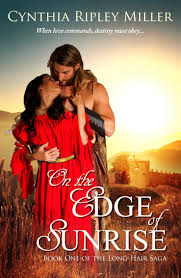
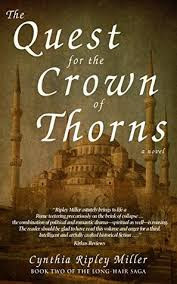 The year is AD 450. The Roman Empire wanes as the Medieval Age awakens. Attila the Hun and his horde conquer their way across Europe into Gaul. Caught between Rome’s tottering empire and Attila’s threat
The year is AD 450. The Roman Empire wanes as the Medieval Age awakens. Attila the Hun and his horde conquer their way across Europe into Gaul. Caught between Rome’s tottering empire and Attila’s threatare the Frankish tribes and their ‘Long-Hair’ chiefs, northern pagans in a Roman Christian world, and a people history will call the Merovingians. A young widow, Arria longs for a purpose and a challenge. She is as well
versed in politics and diplomacy as any man … but with special skills of her own.
The Emperor Valentinian, determined to gain allies to help stop the Huns, sends a remarkable envoy, a woman, to the Assembly of Warriors in Gaul. Arria will persuade the Franks to stand with Rome against Attila.
When barbarian raiders abduct Arria, the Frank blue-eyed warrior, Garic, rescues her. Alarmed by the instant and passionate attraction she feels, Arria is torn between duty and desire. Her arranged betrothal to
the ambitious tribune, Drusus, her secret enlistment by Valentinian as a courier to Attila the Hun, and a mysterious riddle—threaten their love and propel them into adventure, intrigue, and Attila’s camp. Rebels in a
falling empire, Arria and Garic must find the strength to defy tradition and possess the love prophesied as their destiny.
Amazon US Amazon UK

Published on December 17, 2017 23:00
December 16, 2017
Christmas during the American Civil War #Christmas #history @RichardBuxton65


Christmas during the
American Civil War
By Richard Buxton.
A Civil War Christmas
It was Christmas Day in 1860 and Lincoln, newly elected president but yet to be inaugurated, was at home in his reception room in Springfield, Illinois. The town was busy. Christmas was not a public holiday. He was trying to cope with a mountain of mail and a constant flow of visitors who were mostly there for their own interests rather than his. South Carolina had seceded five days ago. Civil War loomed, although the first shot wouldn’t be fired until the spring.
Amongst the gifts he received from complete strangers this day, was a whistle fashioned from a pig-tail. The sender claimed he’d crafted it just to show it was possible. I can imagine it appealing to Lincoln’s earthy sense of humour. It probably got more attention from him than his more expensive gifts.
The four Christmases to follow would all be in wartime and every one of them would see fighting. Lincoln would be dead before the next peaceful Christmas, along with around 650,000 other Americans, North and South.
The war to come would change many things, including Christmas. For decades, even centuries, before the war, European Yuletide traditions had poured into America along with variant nationalities and religions. American practices at Christmas largely paralleled those in Europe. In the same way they followed hat styles in Paris, they adopted Victorian/Germanic fashions in Christmas trees, decorations and cards. Being American, they added a flare for commercialism that left Christmas never quite the same again.
To understand the wartime development of Christmas, you need to consider how the Civil War more widely shaped American identity. What it means to be American has never truly been a constant. It didn’t arrive fully formed with the Declaration of Independence. At the outbreak of war, America was just eighty-five years old. In those years it had never stopped changing and reaching westward, a constant flow of immigrants stirring the pot. Now here was its greatest crisis, a civil war, where the question of what it meant to be American, what the Union represented was a matter of life and death. And here were men and, to a lesser extent, women, thrown together in great armies: English, Scots, Welsh and Irish, German speakers, the Dutch, eastern Europeans; all away from home and all lonely. Any commonality in Christmas traditions really mattered. It helped comfort them but it also gave them a seasonal rallying point in terms of what it meant to be American. The Civil War re-asserted and to some extent reconstructed America. Christmas traditions were a brick in that reconstruction.
You’ll want some proof. Here goes. The first depiction of Santa Claus, as we might recognise him today, dates from the Civil War. It’s true. During his campaign for president, Lincoln hired an illustrator to produce his posters. The artist was called Thomas Nast and, late in 1862, he was asked by one of the most popular periodicals of the time, Harper’s Weekly, to produce their Christmas cover. Knowing Nast as he did, Lincoln himself is rumoured to have proposed the idea of Santa Claus visiting Union troops.

Santa Claus appears in the stars and stripes, but he is the same white-bearded, rotund, non-chimney-shaped old fellow that we see in shopping centre grottos to this day. The genius of the image was that it mixed tradition with patriotism at a time the Union war effort was at a low ebb. The cover was so popular that Nast got repeat commissions from Harper’s Weekly for many Christmases to come.
Christmas on the frontline wasn’t quite as joyous as Mr Nast was implying. A Union army was camped to the south-east of Nashville. A Confederate army was close; just a little way down the road to Chattanooga. Battle might come soon. The weather had been clear and mild but Christmas Day it was overcast.
Santa Claus, represented by the postal service, turned up for some, usually with food parcels rather than presents, but many would get nothing at all. Peter Cozzens, in his wonderful trilogy on the Chattanooga Campaign, describes a festive season for the officers, especially the Confederates, as they were on home turf and supported by the local citizenry. Elaborate balls were held, the halls decorated with cedars, evergreens and captured battle flags. The Union army had to work harder for dance partners; the Fifteenth Wisconsin put two of its soldiers in drag for a party at the local schoolhouse.
Away from the more organised festivities the soldiers played dice, held chicken fights and the whiskey flowed freely. Food was a preoccupation every day of the year and not just at Christmas, but some made a special effort. Johnny Green of the Ninth Kentucky headed out into the country in search of a turkey. He found eggs and onions but had to settle for a goose. He baked a poundcake and, being teetotal, settled for a quiet meal. Colonel John Beatty of the Third Ohio did a little better. Back in Nashville he acquired a turkey for a dollar and seventy-five cents, but, he said, ‘it lacked the collaterals, and was a failure.’
Beatty’s disappointment with his attempt to honour the day was more in line with the general mood. Melancholy ultimately won out over Yuletide cheer. While Christmas Day offered soldiers a brief escape from the daily grind of army life, it was also a pointed reminder that they were far from loved ones. Many chose to spend the free time they had writing letters home or, seated around the campfire, recalling earlier and happier Christmases. Many would only be ghosts at Christmases yet to come. Over New Year three-thousand would die at the Battle of Stones River.
Things were little happier at home. In a novel written shortly after the war, Louisa May Alcott describes how her ‘Little Women’ woke to find no stockings hung in the fireplace, but a bible under each pillow. The absence of, and concern for, Father, is a constant through the whole day. In the South children were even harder done by. The Union Navy had blockaded all the ports, basic foodstuffs were exorbitant and most presents would be homemade. In a harsh move to manage expectations, General Howard Cobb’s children were simply told that Santa Claus had been shot.

Lincoln spent the four wartime Christmases in the White House and for the last received a present much larger but every bit as odd as his pigtail whistle. General Sherman, having devastated much of Georgia, telegraphed Lincoln. ‘I beg to present you as a Christmas gift the city of Savannah…’
Nast would continue his Harper’s Weekly cover pictures long after the war. Christmas traditions in America, solidified and somewhat unified by a new sense of what it meant to be American, would endure. But this wasn’t the most telling change in Christmas celebrations.
Before and during the war, enslaved African-Americans only enjoyed Christmas at the whim of their ‘benevolent’ masters. There may have been extra leisure time, better food, parties and even permission to travel to visit relatives. No doubt the slaves made the best of what was granted to them. The most profound change in the celebration of Christmas brought on by the Civil War was that in 1865, after the total Union victory, four million former slaves were free to make their own plans for Christmas.
Richard Buxton
 Richard Buxton grew up in Wales but has lived in Sussex for the last thirty years. He is a 2015 graduate of the Creative Writing Masters programme at Chichester University. He studied in America during his twenties and tries to return there as often as he can for research and inspiration. His writing successes include winning the Exeter Story Prize, the Bedford International Writing Competition and the Nivalis Short Story award. His US Civil War novel, Whirligig, released this spring, was shortlisted for the 2017 Rubery International Book Award.
Richard Buxton grew up in Wales but has lived in Sussex for the last thirty years. He is a 2015 graduate of the Creative Writing Masters programme at Chichester University. He studied in America during his twenties and tries to return there as often as he can for research and inspiration. His writing successes include winning the Exeter Story Prize, the Bedford International Writing Competition and the Nivalis Short Story award. His US Civil War novel, Whirligig, released this spring, was shortlisted for the 2017 Rubery International Book Award.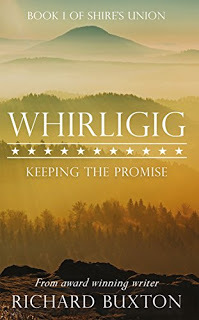 Whirligig
WhirligigShire leaves his home and his life in Victorian England for the sake of a childhood promise, a promise that pulls him into the bleeding heart of the American Civil War. Lost in the bloody battlefields of the West, he discovers a second home for his loyalty.
Clara believes she has escaped from a predictable future of obligation and privilege, but her new life in the Appalachian Hills of Tennessee is decaying around her. In the mansion of Comrie, long hidden secrets are being slowly exhumed by a war that creeps ever closer.
The first novel from multi-award winning short-story writer Richard Buxton, Whirligig is at once an outsider’s odyssey through the battle for Tennessee, a touching story of impossible love, and a portrait of America at war with itself. Self-interest and conflict, betrayal and passion, all fuse into a fateful climax.
Amazon

Published on December 16, 2017 23:00
December 15, 2017
Christmas in 12th Century Wales #Christmas #history #Wales @Madog1170


Christmas in 12th Century WalesBy David Pryce
 Wales; a land of stunning scenery, imposing fortresses, lyrical prose and uplifting song; at this time of year you’re also likely to see Christmas lights and in more recent years a proliferation of inflatable snowmen, angels and reindeer. You’ll also be bombarded with advertisements for items you didn’t realize you needed, whist the jingle of ‘traditional’ Christmas music is never far from your ears… Slade anyone? For better or for worse, this is Christmas in the twenty first century, but what would Christmas have been like in the time of my novel? How would late twelfth century Welshmen and women have celebrated this most magical time of the year? With more religious fervor than is commonplace in modern society I would wager. From its origins as a Pagan celebration of the winter solstice, Christmas had, by the time of Prince Madoc become the most prominent religious celebration of the year. One of only two days in the Christian calendar (the other being Easter) when three masses were performed on a single day; towards the end of the twelfth century, the importance of Christmas mass was being highlighted by the addition of visual images, such as displaying a crib in the church to represent the place where Jesus was born. The liturgy would likely also have included dramatic scenes, such as angels singing.All this did not mean some sort of Cromwellian style ban on fun and frolics however; on the contrary, by 1170 Christmas was established as a time of excess, with great feasts, gifts for rich and poor and general indulgence in eating, drinking, dancing, poetry recital and singing. Many of our Christmas traditions can trace their roots back to this period; for example, if you enjoy carol singers serenading you at the door then you can thank irate priests who ejected singers from their masses for taking the word ‘carol’ at little too literally. Singing and dance in a circle during a serious religious service was just not the ‘done thing’ as far as the church was concerned. I’m sure we all love a mince pie or three at this time of the year; well in Madoc’s time the pies were baked in rectangular cases to represent the infant Jesus’ crib. The cinnamon, cloves and nutmeg were meant to symbolise the gifts bestowed by the three wise men, and eating one on each of the twelve days of Christmas was considered good luck, which seems like as good an excuse as any; although back in the twelfth century, mince pies as the name implies literally contained minced meat along with the spices and fruit.
Wales; a land of stunning scenery, imposing fortresses, lyrical prose and uplifting song; at this time of year you’re also likely to see Christmas lights and in more recent years a proliferation of inflatable snowmen, angels and reindeer. You’ll also be bombarded with advertisements for items you didn’t realize you needed, whist the jingle of ‘traditional’ Christmas music is never far from your ears… Slade anyone? For better or for worse, this is Christmas in the twenty first century, but what would Christmas have been like in the time of my novel? How would late twelfth century Welshmen and women have celebrated this most magical time of the year? With more religious fervor than is commonplace in modern society I would wager. From its origins as a Pagan celebration of the winter solstice, Christmas had, by the time of Prince Madoc become the most prominent religious celebration of the year. One of only two days in the Christian calendar (the other being Easter) when three masses were performed on a single day; towards the end of the twelfth century, the importance of Christmas mass was being highlighted by the addition of visual images, such as displaying a crib in the church to represent the place where Jesus was born. The liturgy would likely also have included dramatic scenes, such as angels singing.All this did not mean some sort of Cromwellian style ban on fun and frolics however; on the contrary, by 1170 Christmas was established as a time of excess, with great feasts, gifts for rich and poor and general indulgence in eating, drinking, dancing, poetry recital and singing. Many of our Christmas traditions can trace their roots back to this period; for example, if you enjoy carol singers serenading you at the door then you can thank irate priests who ejected singers from their masses for taking the word ‘carol’ at little too literally. Singing and dance in a circle during a serious religious service was just not the ‘done thing’ as far as the church was concerned. I’m sure we all love a mince pie or three at this time of the year; well in Madoc’s time the pies were baked in rectangular cases to represent the infant Jesus’ crib. The cinnamon, cloves and nutmeg were meant to symbolise the gifts bestowed by the three wise men, and eating one on each of the twelve days of Christmas was considered good luck, which seems like as good an excuse as any; although back in the twelfth century, mince pies as the name implies literally contained minced meat along with the spices and fruit.

With the discovery of America still in Madoc’s future, his Christmas table in North Wales would likely have been festooned with a goose or two – the turkey of course being a North American native. Perhaps some trout from the fresh mountains streams? Venison was also a popular alternative and in the Christmas spirit, a generous Prince of Gwynedd may have shared his bounty with those less fortunate than himself, though not the best cuts of meat. The unwanted parts of the family’s Christmas deer, the offal (or ‘umbles’) were mixed with other ingredients to make a Christmas pie. The poor would literally find themselves eating ‘umble’ pie. Most definitely a simpler time then, but one of joy and thankfulness…perhaps we could all learn a little from that?
David Pryce
 David Pryce was born and bred in North Wales; after graduating with a Mining Engineering degree he spent the next seven years living and working in Southern Africa.He currently resides in Colorado, but returns to North Wales on a regular basis to visit family and rediscover his intrinsic ‘Welshness’. This also affords him the opportunity to eat some decent fish and chips and sink a pint or three of real beer!
David Pryce was born and bred in North Wales; after graduating with a Mining Engineering degree he spent the next seven years living and working in Southern Africa.He currently resides in Colorado, but returns to North Wales on a regular basis to visit family and rediscover his intrinsic ‘Welshness’. This also affords him the opportunity to eat some decent fish and chips and sink a pint or three of real beer!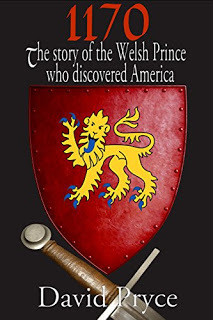
Native American folklore tells us of a brave group of pale skinned explorers who many, many generations ago crossed a 'Great Water' to reach their lands. These people called themselves 'Welsh' and this is their story...Join Prince Madoc and his intrepid band of followers as they turn their backs on treachery and duplicity to undertake a voyage that will test their togetherness, belief and fighting spirit; taking them beyond the known boundaries of civilization to distant lands far to the west. An adventure story at heart, '1170' evokes the spirit of that bygone era of Saturday morning matinee serial film.
Amazon

Published on December 15, 2017 23:00
December 14, 2017
Christmas in Northern Ireland during WW2 #Christmas #History #WW2 @DianneAscroft

 Christmas in Northern Ireland during World War IIByDianne Ascroft
Christmas in Northern Ireland during World War IIByDianne AscroftA County Fermanagh Wartime Christmas
I love the buzz and glitter of Christmas: strings of coloured lights winking on the Christmas tree in ever-changing patterns; ornaments and tinsel in every imaginable, shiny colour; real or imitation pine wreaths, garlands and trees adorned with baubles; and the plethora of novelty items that serenade listeners with Christmas songs and carols.
For the past couple of years, I’ve been writing a series of stories set during the Second World War in County Fermanagh, a county at the western edge of Northern Ireland. There were some differences in the way Christmas was celebrated between town and country, and between Protestant and Roman Catholic homes, but overall Christmas was kept in the same way in homes throughout the county during the war years.
Most people are aware that the United Kingdom faced hardships during the Second World War, making their holiday celebrations frugal and treats rare and special. Conditions varied from place to place, and heavily bombed towns and cities fared worse than others. Northern Ireland was more fortunate than many other places.
Although Northern Ireland was part of the United Kingdom, it didn’t experience the war years in quite the same way as the rest of the nation and its Christmases were less changed by the conflict than some other places were. Among the reasons for this were: its physical location further from mainland Europe made it a less frequent target for German bombers; its mainly agricultural landscape provided food and fuel for its population, lessening the need for rationing during the early years of the war and even making it possible to supply other parts of the nation with foodstuffs such as milk and eels; and political opposition to conscription by the Nationalist population ensured that it was never enacted in the province, leaving more able-bodied men at home than in the rest of the United Kingdom. Approximately 38,000 men and women from Northern Ireland voluntarily enlisted in the armed forces but many able-bodied men remained at home to work in war industries and agriculture in the province; some went to England to work in the war industries and to build military bases.
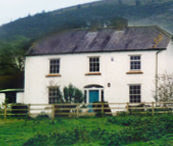 Let’s step into County Fermanagh during the Second World War now. Before war was declared, the county was primarily a poor, rural one, far from Belfast and Londonderry, the largest cities in the province, and the way of life had changed little in generations. Families were often large: ten or twelve children were not uncommon. Farmers raised livestock such as sheep and pigs, kept a cow for milk and grew crops such as potatoes, cabbage and turnips for their own use, selling any surplus to earn money to buy necessities they couldn’t grow or make.
Let’s step into County Fermanagh during the Second World War now. Before war was declared, the county was primarily a poor, rural one, far from Belfast and Londonderry, the largest cities in the province, and the way of life had changed little in generations. Families were often large: ten or twelve children were not uncommon. Farmers raised livestock such as sheep and pigs, kept a cow for milk and grew crops such as potatoes, cabbage and turnips for their own use, selling any surplus to earn money to buy necessities they couldn’t grow or make. The arrival of Allied troops from the rest of the United Kingdom and overseas injected money into the local economy, producing unexpected prosperity. Army camps and RAF flying-boat bases sprang up throughout the county, and the population grew until approximately a quarter of the county’s inhabitants were military personnel. Although the nation was at war and conditions were difficult in many places, the inhabitants of this county were better off than they could ever remember.
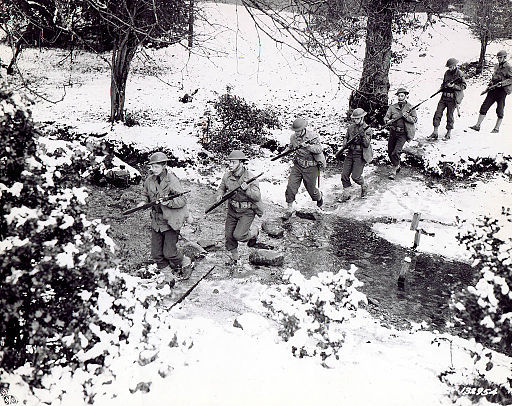
Despite the changes that were occurring, Christmas remained a religious and family celebration. Longstanding divisions existed between the Protestant and Roman Catholic communities, but they shared many traditions in common, including their devotion to their religious observances. Everyone able to travel attended a church service or Mass on Christmas morning. Few had motor vehicles and petrol was rationed so parishioners walked or rode in a horse and trap, and islanders who lived on the many lakes in the county rowed to the mainland in flat-bottomed boats called cots, to their churches. Since church bells should only be rung to signal an invasion or attack, they remained silent, refraining from calling parishioners to worship as they had previously done. A Nativity scene was the focal point of each church’s decorations and, during the weeks of Advent, children were filled with anticipation as they waited for the Baby Jesus to be placed in the manger of the scene on Christmas morning.

A strong tradition of storytelling was woven into county life and the wonder of the season was brought alive for children by stimulating their imaginations rather than lavishing them with material gifts. If it snowed on Christmas Eve, children were told that the snow was the feathers of the geese being plucked in heaven for the Christmas feast and they were admonished to be good so that Father Christmas would stop at their house Christmas Eve.
Homes were decorated simply using materials that were readily available. Children gathered holly and ivy, which grew abundantly in the fields and hedges, and festooned picture frames, mirrors and the mantelpiece with them. Colourful, handmade paperchains, crisscrossing the ceiling of the sitting room and kitchen, were the other mainstay of decorations. Frequent paper drives were held to gather paper for the war effort so the chains were fashioned from any old scraps of paper that could be spared. Christmas trees were rare in family homes until years later.

Electricity hadn’t yet arrived in most parts of the county so homes were lit with oil and kerosene lamps, and candles. Roman Catholics traditionally placed large candles, set in carved-out turnip bases, in their windows on Christmas Eve to welcome the Holy Family, the Virgin Mary and, her husband, Joseph. Blackout restrictions forbade lights to be visible in windows after nightfall and, although this restriction was generally observed, it was impossible to police many remote areas so it is likely that some continued to observe the tradition, ignoring the regulations for one night of the year.
Children hung their stockings on the mantelpiece before bedtime Christmas Eve, hoping for gifts from Father Christmas, the English equivalent of Santa Claus. Gifts were modest: a few small items such as a handful of sweets, a handmade toy, a game, and maybe something practical such as a pair of mittens or a scarf. Traditionally an orange had been included but imported fruit was impossible to obtain during the war years. A larger, but not extravagant, gift was left beside the child’s bed.
As the war dragged on, County Fermanagh felt the effects of rationing like the rest of the nation although it wasn’t as severely hit as large towns and cities in England. Hunting and fishing supplemented diets and in many homes a bird, usually a goose or a chicken if the larger bird couldn’t be obtained, graced the Christmas dinner table accompanied by available vegetables, including potatoes and turnips. The meat was cooked slowly in a range or a roasting pot hung on a crook over the fire. Ration coupons were saved to buy extra sugar, butter and other items but they might not provide the woman of the house with all she required. A healthy blackmarket trade both ways across the border with the neutral Irish Free State supplied the shortfall. Many people made day trips by train to Bundoran, in neighbouring County Donegal, to buy items that were in short supply in Northern Ireland and smuggled them home. The trains on this route were jokingly referred to as Sugar Trains due to the amount of smuggled goods regularly brought home across the border. When every attempt proved futile and food items were impossible to obtain, people had to be inventive. Since fruit was scare and sufficient quantities of sugar for baking was difficult to obtain, Christmas puddings were sometimes made without sugar and breadcrumbs provided their substance.
Many families invited servicemen stationed at the many camps in the county to share their Christmas dinner. Their hospitality was amply repaid by the soldiers and airmen who brought treats such as tinned fruit or meat, chocolates and other luxuries. The American servicemen were particularly welcome guests as they raided their camps’ bountiful stores to bring choice items not available in the British military camps. Their contributions greatly enhanced many families’ meals.
After dinner families relaxed together at the hearth. Fireplaces were essential to heat houses, not only a pleasant addition to the holiday atmosphere. Although people were often more frugal the rest of the winter, extra fuel, either peat or wood was gathered as Christmas approached or coal was bought, to ensure a good fire in the hearth during the festive season. Television was not yet available and the radio, or wireless, was the popular form of entertainment. Particularly in Protestant homes, the King’s Speech must not be missed on Christmas afternoon.
While many were missing family members who were absent, away in the armed forces or working in England, some had additions to their families. Children who had been evacuated from Belfast because of the threat of bombing raids found temporary homes with local families, often forming lifelong bonds with their hosts.
One area of life that was transformed by the arrival of the troops was entertainment. Christmas plays and pantomimes, performed by local people as well as the occasional travelling troupe of performers, were events eagerly anticipated by young and old alike each year and this continued to be so. But the arrival of the Allied servicemen meant that many more dances were held than previously. Town halls and parish halls, as well as other venues, hosted these soirees to entertain the visitors to the county and the military bases reciprocated, hosting dances in their mess halls. Because civilians were not subject to a curfew as military personnel were, dances often ended in the early hours of the morning but the clergy ensured that on Saturday evenings dances held in parish halls ended early so that parishioners were not too tired to attend church services the next morning.
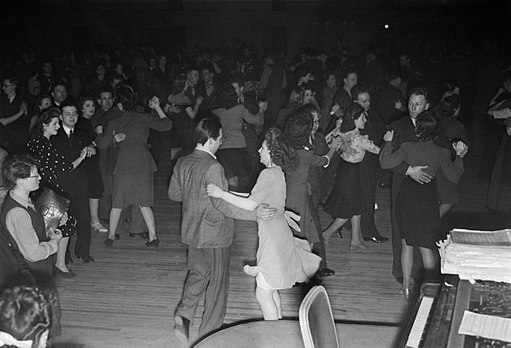
Socialising was an important aspect of the festive season and, while Christmas Day was spent at home, many visited relatives on Boxing Day, or St Stephen’s Day as it was known in the Roman Catholic community. Dropping in to chat, have a drink of tea and possibly something stronger, and maybe to dance in the kitchen was known as ceilidhing and most homes had an open door for visitors. Various groups of local lads went from house to house to entertain and collect money from their hosts; the money collected was later used to throw a party. Some of these groups were Mummers or Strawmen and their visits occurred during the week following Christmas Day. Dressed in traditional Mummer costumes and straw masks, they enacted Mummer plays, adapted from the original English ones, complete with characters that included Prince George, Beelzebub, Jack Straw and the Doctor. In the Roman Catholic community, the Wren Boys visited their neighbours on St Stephen’s Day, disguised in ragged clothes and carrying an effigy of a wren, singing and playing instruments, collecting money to ‘bury the wren’.
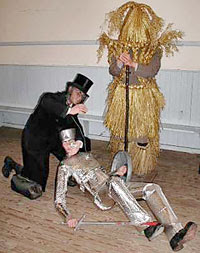
Preparations for the festive season began a few days before Christmas Eve and the festivities continued throughout the twelve days of Christmas: from Christmas Day until 6thJanuary or Little Christmas as it was often called; it was considered bad luck to take down decorations before the last day of this period. While Christmas was primarily a religious holiday, it was also a time to forget cares and enjoy life with family and friends. Privation and hardship were part of the war years but this was counterbalanced by the changes the servicemen brought to the county, both materially and socially. Because the festive season had always been celebrated simply, adversity didn’t cause it to lose its lustre during the difficult years of the war.
Dianne Ascroft
 Dianne Ascroft writes historical and contemporary fiction, often with an Irish connection. Her series The Yankee Years is a collection of Short Reads and novels set in World War II Northern Ireland. After the Allied troops arrived in this outlying part of Great Britain, life there would never be the same again. The series strives to bring those heady, fleeting years to life again, in thrilling and romantic tales of the era.
Dianne Ascroft writes historical and contemporary fiction, often with an Irish connection. Her series The Yankee Years is a collection of Short Reads and novels set in World War II Northern Ireland. After the Allied troops arrived in this outlying part of Great Britain, life there would never be the same again. The series strives to bring those heady, fleeting years to life again, in thrilling and romantic tales of the era.Her other writing includes a ghost tale inspired by the famous Northern Irish legend of the Coonian ghost, An Unbidden Visitor; a short story collection, Dancing Shadows, Tramping Hooves, and an historical novel, Hitler and Mars Bars.
Dianne lives on a small farm, in County Fermanagh, with her husband and an assortment of strong-willed animals. When she’s not writing, she enjoys walks in the countryside, evenings in front of her open fireplace and Irish and Scottish folk and traditional music.
Dianne loves to hear from readers, you can find her… Website & Blog Facebook Twitter Mailerlite Newsletter signup
The Yankee Years
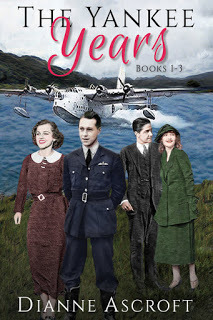 After the Allied troops arrived in County Fermanagh, Northern Ireland during the Second World War, life in the quiet, rural county would never be the same again.
After the Allied troops arrived in County Fermanagh, Northern Ireland during the Second World War, life in the quiet, rural county would never be the same again.Book 1: The Shadow Ally
June 1941: When Ruth Corey finds a letter her journalist boyfriend, Harry Coalter, has written, revealing details of the secret construction of an American flying-boat base, she fears he will disclose information that could destroy America's neutrality and land him in serious trouble. The letter must not be posted. Ruth enlists the help of a guest at her family's hotel, attractive Italian-American civilian contractor Frank Long, to help her stop Harry.
Can Ruth safeguard this military secret and protect her beau?
Book 2: Acts of SabotageDecember 1941: The attack on Pearl Harbor and America's entry into the war have eliminated the need for secrecy surrounding the construction of the American flying-boat base but now there is an urgency to complete the project before the first US troops arrive on Northern Ireland's shores. Frank is doing his utmost to ensure the airbase will be ready but religious conflict within the workforce and suspected IRA involvement in the theft of materials and tools from the construction site make his job nearly impossible. When Frank confides his worries to Ruth, despite the risks entailed in meddling in the activities of terrorists, the pair devise a plan to catch the thieves.
Can Ruth and Frank stop the acts of sabotage that threaten the military project and what does the future hold for the two of them?
Book 3: Keeping Her Pledge
June 1942: Pearl Grainger's life is much more exciting since the Allied troops arrived. She's out dancing several times each week and she has met RCAF seaplane navigator, Pilot Officer Chuck Walker who quickly becomes special to her. The harsh realities of war are far removed from her until the evening an RCAF flying-boat crashes into a field on her family's farm. Watching her family attempt to rescue the crew from the burning wreckage, she realises it's time she played her part in the war effort and resolves to volunteer at the nearby US Army Station Hospital. Pearl's intentions are good but she is unprepared for the harsh reality of a hospital during wartime, and her RCAF boyfriend is determined to protect her from it.
Can Pearl keep her pledge to do her bit for the war effort without losing the man she loves?Amazon
Coming Soon...

For more information click here.

Published on December 14, 2017 23:00
The Coffee Pot Book Club
The Coffee Pot Book Club (formally Myths, Legends, Books, and Coffee Pots) was founded in 2015. Our goal was to create a platform that would help Historical Fiction, Historical Romance and Historical
The Coffee Pot Book Club (formally Myths, Legends, Books, and Coffee Pots) was founded in 2015. Our goal was to create a platform that would help Historical Fiction, Historical Romance and Historical Fantasy authors promote their books and find that sometimes elusive audience. The Coffee Pot Book Club soon became the place for readers to meet new authors (both traditionally published and independently) and discover their fabulous books.
...more
...more
- Mary Anne Yarde's profile
- 159 followers



